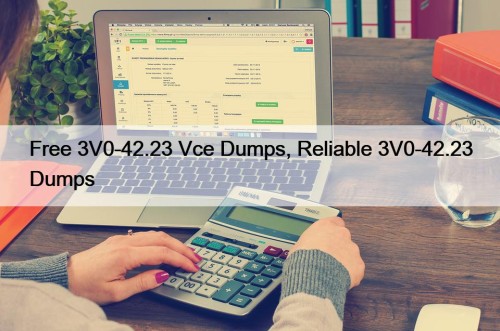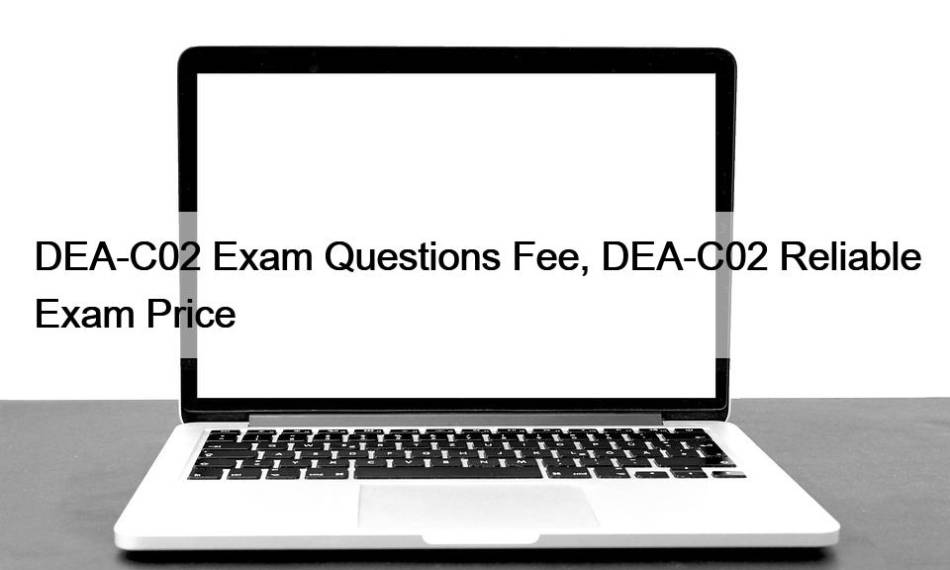Most Popular
 Free 3V0-42.23 Vce Dumps, Reliable 3V0-42.23 Dumps
Free 3V0-42.23 Vce Dumps, Reliable 3V0-42.23 Dumps
2025 Latest Lead2PassExam 3V0-42.23 PDF Dumps and 3V0-42.23 Exam Engine ...
 Trusted Google-Ads-Video Exam Resource, Unlimited Google-Ads-Video Exam Practice
Trusted Google-Ads-Video Exam Resource, Unlimited Google-Ads-Video Exam Practice
DOWNLOAD the newest VCE4Dumps Google-Ads-Video PDF dumps from Cloud Storage ...
 100% Pass 2025 Latest Oracle 1Z0-1127-25 Test Dumps Demo
100% Pass 2025 Latest Oracle 1Z0-1127-25 Test Dumps Demo
We update our Oracle 1Z0-1127-25 exam dumps over time and ...



DEA-C02 Exam Questions Fee, DEA-C02 Reliable Exam Price

You can take SnowPro Advanced: Data Engineer (DEA-C02) (DEA-C02) practice exams (desktop and web-based) of VCETorrent multiple times to improve your critical thinking and understand the Snowflake DEA-C02 test inside out. VCETorrent has been creating the most reliable Snowflake Dumps for many years. And we have helped thousands of Snowflake aspirants in earning the SnowPro Advanced: Data Engineer (DEA-C02) (DEA-C02) certification.
As is known to us, different people different understanding of learning, and also use different methods in different periods, and different learning activities suit different people, at different times of the day. Our DEA-C02 test questions are carefully designed by a lot of experts and professors in order to meet the needs of all customers. We can promise that our DEA-C02 Exam Question will be suitable for all people, including student, housewife, and worker and so on. No matter who you are, you must find that our DEA-C02 guide torrent will help you pass the DEA-C02 exam easily.
>> DEA-C02 Exam Questions Fee <<
Free PDF 2025 DEA-C02: SnowPro Advanced: Data Engineer (DEA-C02) –High-quality Exam Questions Fee
The learning material is open in three excellent formats; Snowflake DEA-C02 dumps PDF, a desktop Snowflake DEA-C02 dumps practice test, and a web-based Snowflake DEA-C02 dumps practice test. Snowflake DEA-C02 dumps is organized by experts while saving the furthest down-the-line plan to them for the Snowflake DEA-C02 Exam. The sans bug plans have been given to you all to drift through the SnowPro Advanced: Data Engineer (DEA-C02) certificate exam.
Snowflake SnowPro Advanced: Data Engineer (DEA-C02) Sample Questions (Q290-Q295):
NEW QUESTION # 290
You are designing a data governance strategy for a Snowflake data warehouse. You need to track data lineage for compliance purposes. Specifically, you need to identify all downstream tables that depend on a specific column in a source table. Which combination of Snowflake features and techniques would you use to achieve this goal effectively?
- A. Implement a custom data lineage tracking system by parsing all SQL queries executed in the Snowflake environment and storing the dependencies in a separate metadata database.
- B. Use Snowflake's INFORMATION SCHEMA views (TABLES, COLUMNS) and regularly audit user query history to manually reconstruct the data lineage.
- C. Rely solely on user documentation and training to ensure data lineage is properly documented and maintained. Implement strict naming conventions for tables and columns.
- D. Utilize Snowflake's data lineage feature in conjunction with object tagging. Tag relevant columns and tables, then query the lineage views to trace dependencies.
- E. Use Snowflake's ACCOUNT USAGE views related to query history and object dependencies, combined with a custom script to recursively trace data lineage based on SQL operations (e.g., INSERT INTO ... SELECT).
Answer: D
Explanation:
Snowflake's data lineage features provide a direct and integrated solution for tracking data dependencies. Object tagging enhances this by allowing you to identify and categorize sensitive data, making it easier to trace lineage for specific data elements. The other options are either manual (A, D), require significant custom development (C, E), or don't leverage Snowflake's built-in capabilities.
NEW QUESTION # 291
You are using the Snowflake REST API to insert data into a table named 'RAW JSON DATA. The JSON data is complex and nested, and you want to efficiently parse and flatten it into a relational structure. You have the following JSON sample:
Which SQL statement, executed after loading the raw JSON using the REST API, is the MOST efficient way to flatten the JSON and extract relevant fields into a new table named 'PURCHASES' with columns like 'EVENT TYPE', 'USER D', 'EMAIL', 'STREET, 'CITY', 'ITEM ID', and 'PRICE'?
- A. Option E
- B. Option C
- C. Option A
- D. Option D
- E. Option B
Answer: B
Explanation:
Option C is the most efficient and correct. It uses the correct Snowflake syntax for accessing JSON elements with and for data type casting and also correctly uses the TABLE(FLATTEN()) function to handle the nested 'items' array. Option A utilizes a deprecated syntax LATERAL FLATTEN'. Options B, D and E don't handle the nested JSON structure properly or the flattening of the 'items' array, resulting in incomplete or incorrect data extraction.
NEW QUESTION # 292
You are working with a directory table named associated with an external stage containing a large number of small JSON files. You need to process only the files containing specific sensor readings based on a substring match within their filenames (e.g., files containing 'temperature' in the filename). You also want to load these files into a Snowflake table 'sensor_readings. Consider performance and cost-effectiveness. Which of the following approaches is the MOST efficient and cost-effective to achieve this? Choose TWO options.
- A. Create a masking policy based on filenames to control which files users can see.
- B. Use a Python UDF to iterate through the files listed in , filter based on filename, and then load each matching file individually using the Snowflake Python Connector.
- C. Create a view on top of the directory table that filters the 'relative_patW based on the substring match, and then use 'COPY INTO' with the 'FILES' parameter to load the filtered files.
- D. Use 'COPY INTO' with the 'PATTERN' parameter, constructing a regular expression that includes the substring match against the filename obtained from the directory table's 'relative_path' column.
- E. Load all files from the stage using 'COPY INTO' into a staging table, and then use a Snowflake task to filter and move the relevant records into the 'sensor_readingS table.
Answer: C,D
Explanation:
Options B and C are the most efficient and cost-effective. Option B (Create a view and use COPY INTO with FILES): Creating a view that filters the directory table allows you to isolate the relevant filenames. Then, using 'COPY INTO' with the 'FILES' parameter pointing to this filtered view directly instructs Snowflake to load only the specified files, minimizing unnecessary data processing. This is efficient as it leverages Snowflake's built-in capabilities. Option C (COPY INTO with the PATTERN parameter): The 'PATTERN' parameter within the 'COPY INTO' command allows you to specify a regular expression. By incorporating the substring match into this regular expression against the metadata$filename" , you can directly filter which files are loaded during the 'COPY INTO operation. This avoids loading irrelevant data and is generally more performant than iterating through files using a UDF. Other options are less efficient or less cost-effective: Option A (Python UDF): Using a Python UDF for this task is generally less efficient. Snowflake is designed to handle this processing natively, and using UDF can lead to performance overhead due to data serialization and deserialization between Snowflake and the UDF environment. Option D (Load all and filter later): Loading all files into a staging table and then filtering is wasteful. It increases data processing time and costs since you're loading unnecessary data. It's always better to filter data closer to the source if possible. Option E (Masking Policy): Masking policies are for security, not data transformation. They are applied at the query level to prevent users from seeing data, but do not help in efficiently processing only specific files.
NEW QUESTION # 293
You are tasked with creating a system to monitor the data quality of a 'SALES DATA" table. The table is updated daily with new sales records, and you need to ensure that the 'SALE AMOUNT column always contains positive values. You decide to use Snowflake tasks and streams for this purpose. Consider the following Snowflake script. What is the most appropriate way to modify the 'SALES DATA' table so the task has a 'WHEN' clause that runs only if the 'SALE AMOUNT has negative values? Assume the stream 'SALES DATA STREAM' is properly configured on 'SALES DATA'.
- A.

- B.

- C.

- D.

- E.

Answer: D
Explanation:
Option C is the most efficient. It combines 'SYSTEM STREAM_HAS_DATA('SALES_DATA_STREAM')' to check if there are any changes in the stream with an 'EXISTS' clause to verify that at least one row in the stream has a 'SALE_AMOUNT' less than 0. This ensures that the task only runs when there are new records in the stream AND at least one of those records violates the data quality rule.
NEW QUESTION # 294
A data team is using Snowflake to analyze sensor data from thousands of IoT devices. The data is ingested into a table named 'SENSOR READINGS' which contains columns like 'DEVICE ID', 'TIMESTAMP', 'TEMPERATURE', 'PRESSURE', and 'LOCATION' (a GEOGRAPHY object). Analysts frequently run queries that calculate the average temperature and pressure for devices within a specific geographic area over a given time period. These queries are slow, especially when querying data from multiple months. Which of the following approaches, when combined, will BEST optimize the performance of these queries using the query acceleration service?
- A. Create a materialized view that pre-calculates the average temperature and pressure by device and location. Then enable query acceleration on the virtual warehouse.
- B. Partition the ' SENSOR_READINGS table by 'TIMESTAMP (e.g., daily partitions). Enable search optimization on the 'LOCATION' column and enable query acceleration.
- C. Enable Automatic Clustering on 'DEVICE_ID' , then enable query acceleration on the virtual warehouse.
- D. Enable search optimization on 'TEMPERATURE and 'PRESSURE columns and enable query acceleration.
- E. Cluster the table by 'LOCATION' and 'TIMESTAMP , and enable search optimization on the 'LOCATION' column, and then enable query acceleration.
Answer: E
Explanation:
Clustering by 'LOCATION' and 'TIMESTAMP' will group related data together, allowing Snowflake to quickly identify the relevant data for spatial queries. Enabling search optimization on the 'LOCATION' column allows queries filtering by geographic area to be accelerated. This combination provides the best performance because it addresses both the time-based and spatial aspects of the queries. Partitioning isn't directly supported by Snowflake but Clustering plays the equivalent role, and search optimization on Geography objects is critical. Materialized views can help, but might not be flexible enough for ad-hoc analysis. Automatic Clustering on 'DEVICE_ID won't help with spatial or time-based filtering. Search optimization on temperature and pressure will not help in spatial search.
NEW QUESTION # 295
......
The prominent benefits of Snowflake DEA-C02 certification exam are more career opportunities, updated skills and knowledge, recognition of expertise, and instant rise in salary and promotion in new job roles. To do this you just need to pass the Snowflake DEA-C02 Exam. However, to get success in the DEA-C02 exam is not an easy task, it is a challenging DEA-C02 exam.
DEA-C02 Reliable Exam Price: https://www.vcetorrent.com/DEA-C02-valid-vce-torrent.html
Excellent DEA-C02 study material, Our DEA-C02 exam torrent and learning materials allow you to quickly grasp the key points of certification exam, Quick feedback, The philosophy of VCETorrent behind offering SnowPro Advanced: Data Engineer (DEA-C02) (DEA-C02) prep material in three formats is helping students meet their unique learning needs, Our company, with a history of ten years, has been committed to making efforts on developing DEA-C02 exam guides in this field.
to publish and sell your own ebook at BN.com, A common thread through his experience has been a search for more effective collaboration across teams, Excellent DEA-C02 Study Material.
Our DEA-C02 exam torrent and learning materials allow you to quickly grasp the key points of certification exam, Quick feedback, The philosophy of VCETorrent behind offering SnowPro Advanced: Data Engineer (DEA-C02) (DEA-C02) prep material in three formats is helping students meet their unique learning needs.
DEA-C02 Practice Materials & DEA-C02 Actual Exam & DEA-C02 Test Prep
Our company, with a history of ten years, has been committed to making efforts on developing DEA-C02 exam guides in this field.
- Reliable DEA-C02 Mock Test 🍾 Practice Test DEA-C02 Fee 😾 Latest DEA-C02 Dumps Ppt 🌂 Search for ⏩ DEA-C02 ⏪ and easily obtain a free download on 【 www.pass4leader.com 】 🔊Reliable DEA-C02 Mock Test
- Efficient Snowflake - DEA-C02 - SnowPro Advanced: Data Engineer (DEA-C02) Exam Questions Fee 🎽 Easily obtain ✔ DEA-C02 ️✔️ for free download through ✔ www.pdfvce.com ️✔️ 😭Valid Braindumps DEA-C02 Pdf
- Free PDF 2025 Updated Snowflake DEA-C02: SnowPro Advanced: Data Engineer (DEA-C02) Exam Questions Fee 🌛 Search for ▶ DEA-C02 ◀ and download exam materials for free through ▷ www.examsreviews.com ◁ 🤐Valid Braindumps DEA-C02 Sheet
- DEA-C02 Study Reference 🔹 Valid Braindumps DEA-C02 Pdf 🏭 DEA-C02 Valid Test Forum 📀 Download ✔ DEA-C02 ️✔️ for free by simply searching on ✔ www.pdfvce.com ️✔️ 🏄Certification DEA-C02 Exam Dumps
- 2025 DEA-C02 Exam Questions Fee | Latest DEA-C02: SnowPro Advanced: Data Engineer (DEA-C02) 100% Pass 🦔 Search for ▷ DEA-C02 ◁ and download it for free on ➥ www.pdfdumps.com 🡄 website ☎Practice Test DEA-C02 Fee
- Customizable DEA-C02 Exam Mode 💆 DEA-C02 Exam Cram ❤️ DEA-C02 Exam Brain Dumps 🥞 Open website ➤ www.pdfvce.com ⮘ and search for ▛ DEA-C02 ▟ for free download 🐙Practice Test DEA-C02 Fee
- 2025 DEA-C02 Exam Questions Fee | Latest DEA-C02: SnowPro Advanced: Data Engineer (DEA-C02) 100% Pass ➡ Enter ▷ www.dumps4pdf.com ◁ and search for “ DEA-C02 ” to download for free 🏐Exam DEA-C02 Experience
- DEA-C02 Valid Test Forum 🥳 DEA-C02 Official Cert Guide 🦰 Reliable DEA-C02 Mock Test 🥁 The page for free download of ➠ DEA-C02 🠰 on ( www.pdfvce.com ) will open immediately ⓂDEA-C02 Vce File
- Snowflake DEA-C02 Questions - For Best Result [2025] 🤑 Open ➠ www.testkingpdf.com 🠰 and search for ➥ DEA-C02 🡄 to download exam materials for free 🙋Certification DEA-C02 Exam Dumps
- Best DEA-C02 Preparation Materials 🌍 DEA-C02 Pass Test 🛑 DEA-C02 Valid Test Forum 🦐 Enter ➥ www.pdfvce.com 🡄 and search for ✔ DEA-C02 ️✔️ to download for free 📧Latest DEA-C02 Dumps Free
- Free PDF 2025 Updated Snowflake DEA-C02: SnowPro Advanced: Data Engineer (DEA-C02) Exam Questions Fee 🍘 Open ▷ www.pass4test.com ◁ and search for ➽ DEA-C02 🢪 to download exam materials for free 🔌Customizable DEA-C02 Exam Mode
- DEA-C02 Exam Questions
- scortanubeautydermskin.me tai-chi.de lms.statmodeller.com easierandsofterway.com kayaksekolah.com explaintennis.com zacksto502.bloggazza.com dollyanddimples-training.co.uk curiosiityclasses.com jasarah-ksa.com
Tags: DEA-C02 Exam Questions Fee, DEA-C02 Reliable Exam Price, Exam DEA-C02 Format, DEA-C02 Test Cram, Valid DEA-C02 Real Test